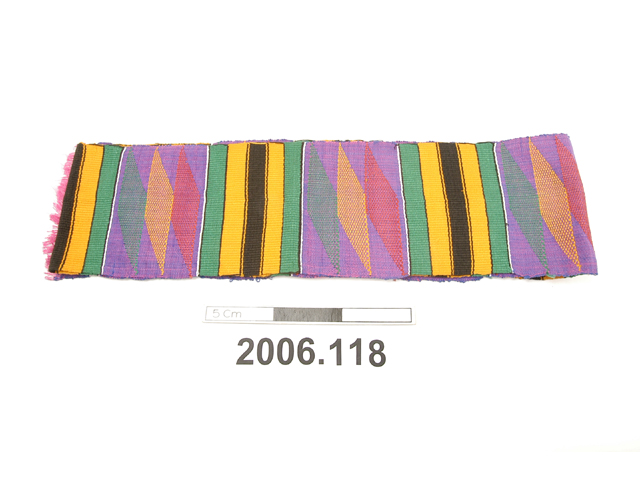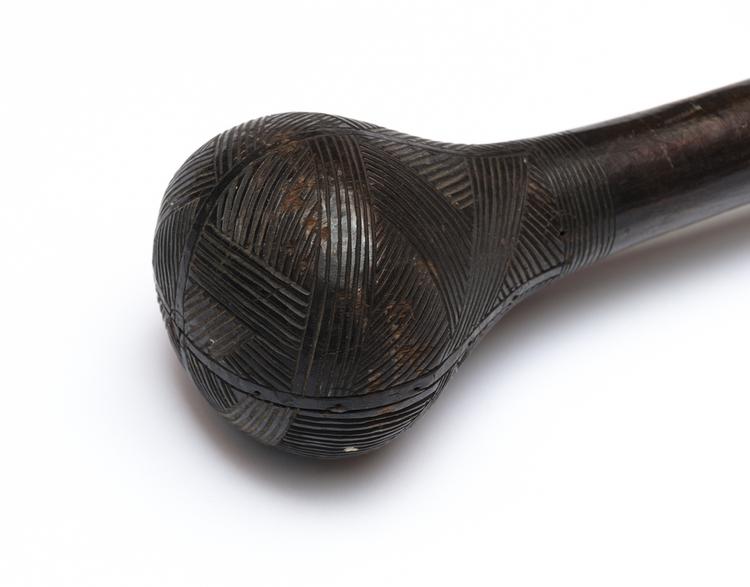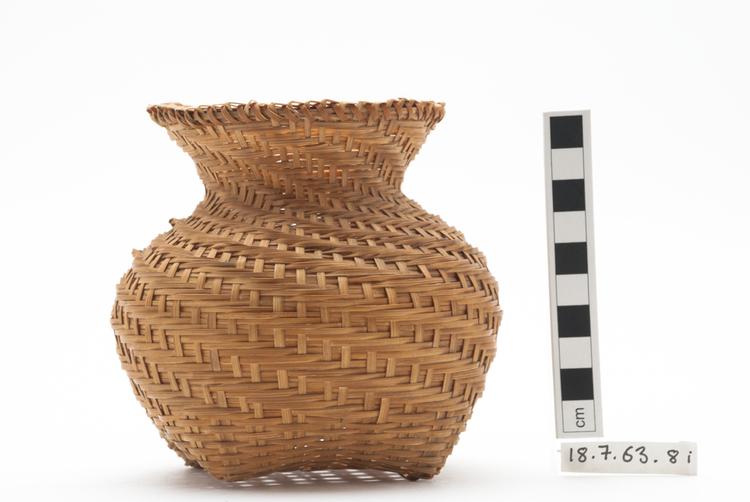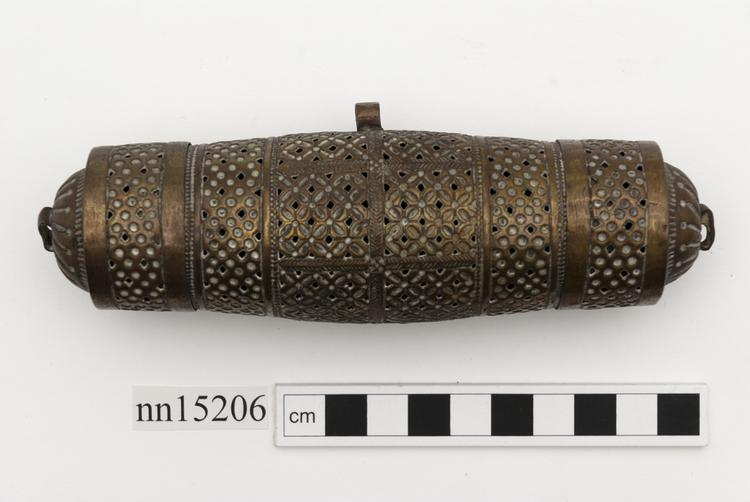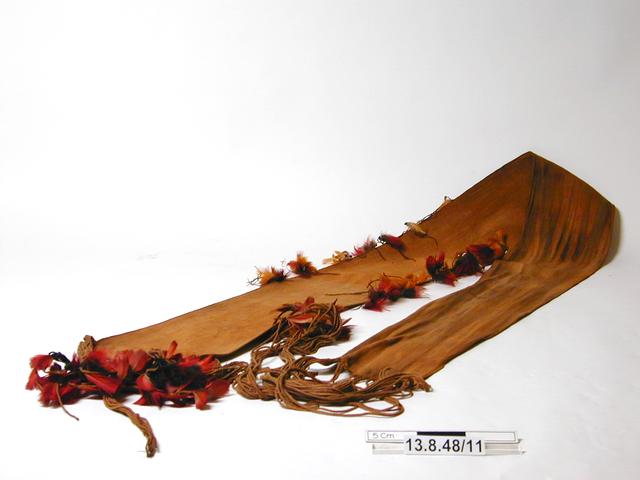
Loincloth. A very long piece of cloth, which is is a rich light brown colour. One end is decorated with two cloth tassels and small red and black feathers. Half way down the loin cloth small clusters of beads and feathers decorate both sides, 10 small clusters on one side and six small clusters on the other. At the other end the loin cloth has several long tassels. Red and cream feathers are attached to these tassels.
Although not attributed to the Wai Wai, this is almost certainly from them. In the correspondence between Cameron and the Horniman, Wai Wai loin cloths are listed. Except for the degree of decoration, it is very similar to 13.8.48/30 which is identified as being from the Wai Wai. Furthermore given the likely date at which the object was collected it is unlikely that other Amerindian peoples were still wearing similar loincloths. It also seems very likely that this object was obtained from J D J Cameron. A photograph of an almost identical Wai Wai loin cloth is to be found opposite p. 82 in W E Roth, Additional studies of the arts, crafts, and customs of the Guiana Indians (Smithsonian Institute, Bureau of American Ethnology 91, 1929). The loin cloth was the standard male clothing throughout the region. The term kamisa or close cognate, borrowed from the Spanish, is the widespread word for this piece of clothing in the region. It is probably woven from native cotton. Modern kamisas are usually made from manufactured trade cloth. For a discussion of the Wai Wai loin cloth, see J Yde, Material culture of the Waiwái (Copenhagen, 1965), pp. 195-8. Peter Riviere, Feb 2013.



